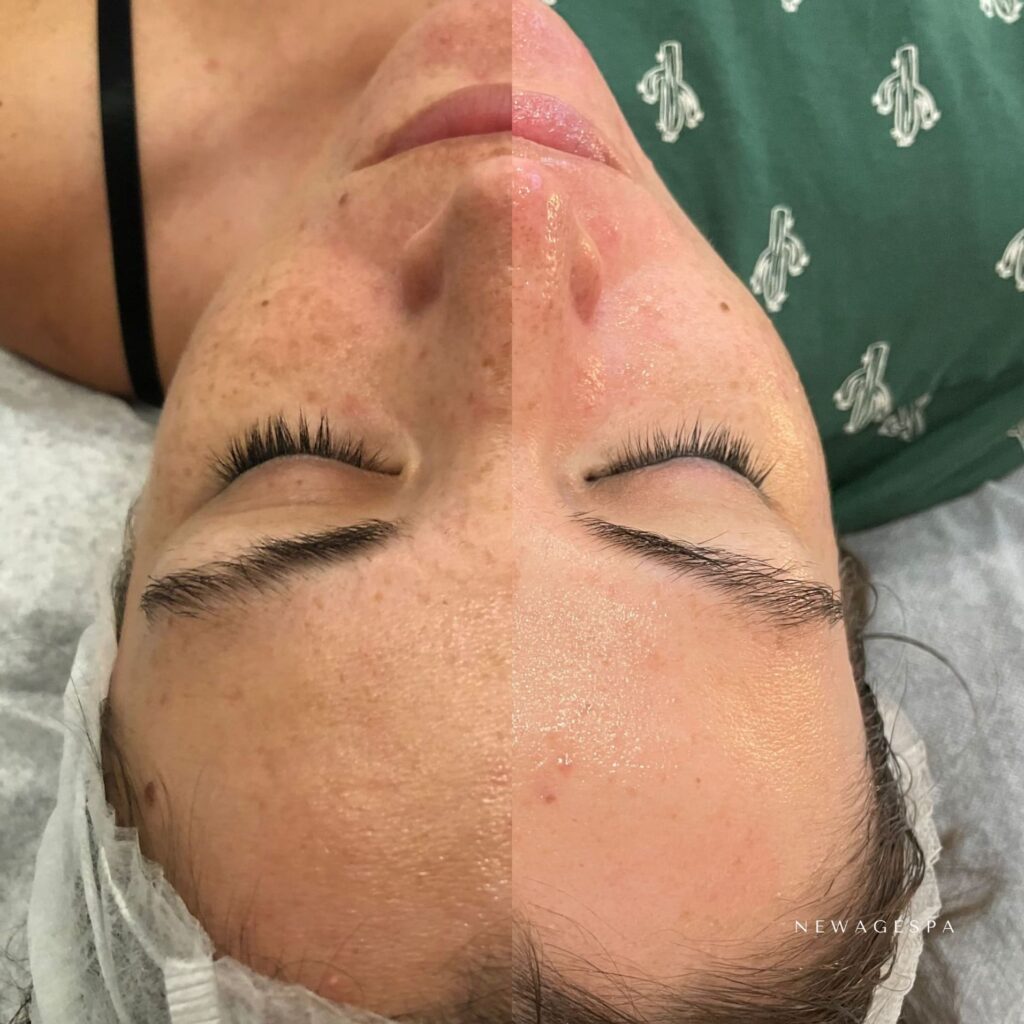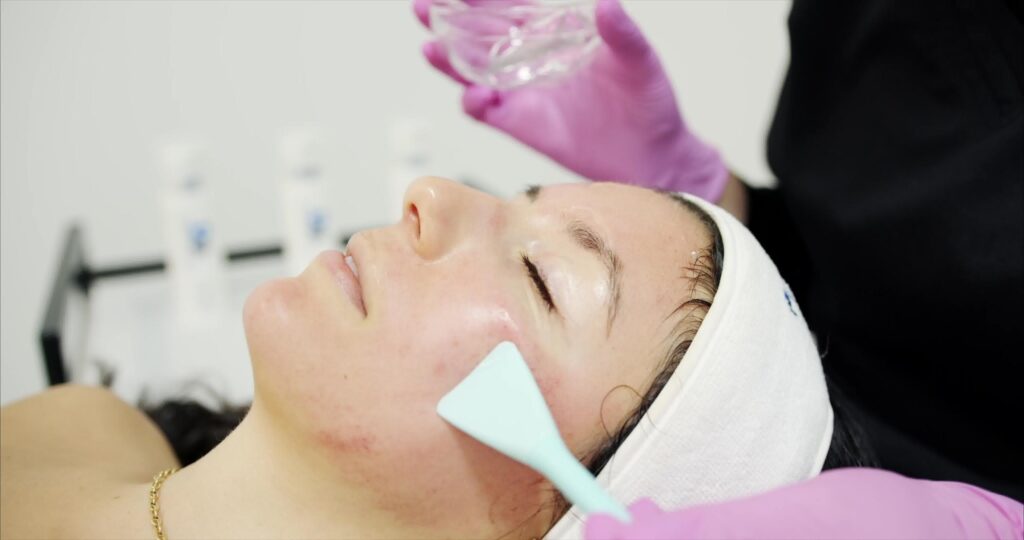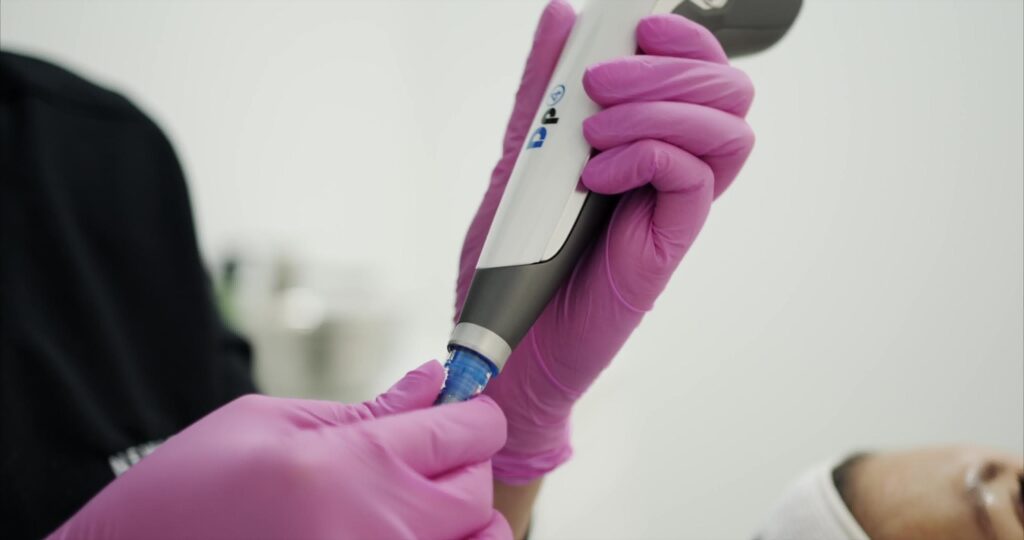
BROWN SPOTS
Brown spots, also known as age spots, liver spots, or sun spots, can appear on our skin as we age or due to overexposure to the sun. These spots are typically harmless but may affect your self-esteem and how you feel about your skin's appearance. At New Age Spa, serving Montreal and Laval, we offer cutting-edge treatments that effectively reduce and eliminate brown spots, giving you a clearer, more even-toned complexion.
Understand HYPERPIGMENTATION
Brown spots are small, dark patches that are commonly a result of prolonged sun exposure, which increases the production of melanin. They can appear on any skin area that has had frequent and prolonged sun exposure, such as the face, hands, shoulders, and arms. While these spots are usually harmless, it's important to get them checked by a professional to ensure they are not atypical or harmful.


our PIGMENTED LESION solutions
Our advanced laser treatments are highly effective at targeting melanin, the pigment that gives the brown spots their color. The laser energy breaks down this pigment into smaller particles, which are then naturally removed by the body, resulting in clearer skin. Chemical Peels: Chemical peels involve the application of a solution to the skin, which helps to exfoliate the top layers. As the skin peels off, newer and less pigmented skin cells surface, reducing the appearance of brown spots. Microdermabrasion OR MICRONEEDLING: This treatment uses a special applicator with an abrasive surface to gently sand away the thick outer layer of the skin. This helps to remove or reduce the visibility of surface-level brown spots.For deeply rooted pigmentation issues, we would opt for microneedling to penetrate the thicker layers of the skin and treat the pigmentation issues.
Save 20% WITH A MEDSPA PACKAGE
Enjoy significant savings of 20% when you purchase a package of three facials compared to individual treatment sessions. Consistency is key to achieving optimal results. By committing to a series of treatments, you'll experience enhanced skin rejuvenation and long-lasting improvements in texture and tone.

PURCHASE A PACKAGE AND SAVE 20% OFF the regular pricE
promotions are non-refundable. view policy
What causes brown spots? Brown spots are primarily caused by sun exposure, which accelerates melanin production in the skin. Aging and genetic factors also play a role.
How can I prevent brown spots? Preventing brown spots involves protecting your skin from excessive sun exposure. Using sunscreen with a high SPF, wearing hats and protective clothing, and avoiding the sun during peak hours are effective strategies.
Are brown spot treatments painful? Our treatments are designed to be as comfortable as possible. Most clients experience minimal discomfort during procedures like laser therapy, chemical peels, and microdermabrasion.
How long does it take to see results from brown spot treatments? Results can vary depending on the depth of the pigmentation and the type of treatment used. Some clients see improvements in as little as one to two sessions, while others may require additional treatments for best results.
Is there any downtime associated with these treatments? Most brown spot treatments have minimal downtime. Clients can typically return to their daily routines immediately after treatment, although some procedures may require a short recovery period during which sun exposure should be limited.
How effective are brown spot treatments at New Age Spa? Our treatments are highly effective, with many clients achieving significant reductions in the appearance of brown spots. We customize treatments based on your specific skin type and pigmentation level to maximize effectiveness.
Additional Information and Pre-Post Care Instructions
Before Treatment:
-
Avoid Sun Exposure: Refrain from excessive sun exposure and tanning beds for at least one week before your appointment. Sunburned or tanned skin can increase the risk of complications and discomfort during the procedure.
-
Discontinue Certain Products: Stop using retinoids, alpha hydroxy acids (AHAs), beta hydroxy acids (BHAs), and other exfoliating skincare products for a few days before your treatment. These products can increase skin sensitivity and irritation.
-
Stay Hydrated: Ensure that your skin is well-hydrated leading up to your appointment. Drink plenty of water and moisturize your skin regularly to maintain optimal hydration levels.
After Treatment:
-
Apply Soothing Products: Use gentle, non-irritating skincare products recommended by your skincare professional to soothe and hydrate your skin post-treatment. Avoid products containing harsh ingredients or fragrances that may exacerbate sensitivity.
-
Protect Your Skin: Shield your skin from direct sun exposure by wearing a broad-spectrum sunscreen with an SPF of 30 or higher. Sunscreen helps prevent sunburn and minimizes the risk of hyperpigmentation, especially during the initial healing phase.
-
Avoid Harsh Treatments: Refrain from using abrasive scrubs, exfoliants, or harsh skincare treatments for at least one week. These products can disrupt the skin’s healing process and increase the risk of irritation.
-
Stay Hydrated: Drink plenty of water and moisturize your skin regularly to maintain hydration and support the healing process. Hydrated skin promotes faster recovery and enhances the results.
-
Follow Post-Treatment Instructions: Adhere to any specific post-treatment instructions provided by your skincare professional. This may include avoiding certain activities, skincare products, or medications that could interfere with the healing process.
-
Be Patient: Results may take time to become noticeable as the skin undergoes the natural healing and regeneration process. Be patient and consistent with your skincare routine to achieve optimal results over time.
Why choose new age SPA
At New Age Spa, our ethos is built on honesty, quality service, and results-driven treatments. Our dedication to maintaining industry-leading hygiene standards, alongside offering a diverse array of effective treatments and personalized client care, distinguishes us in the skincare domain.
